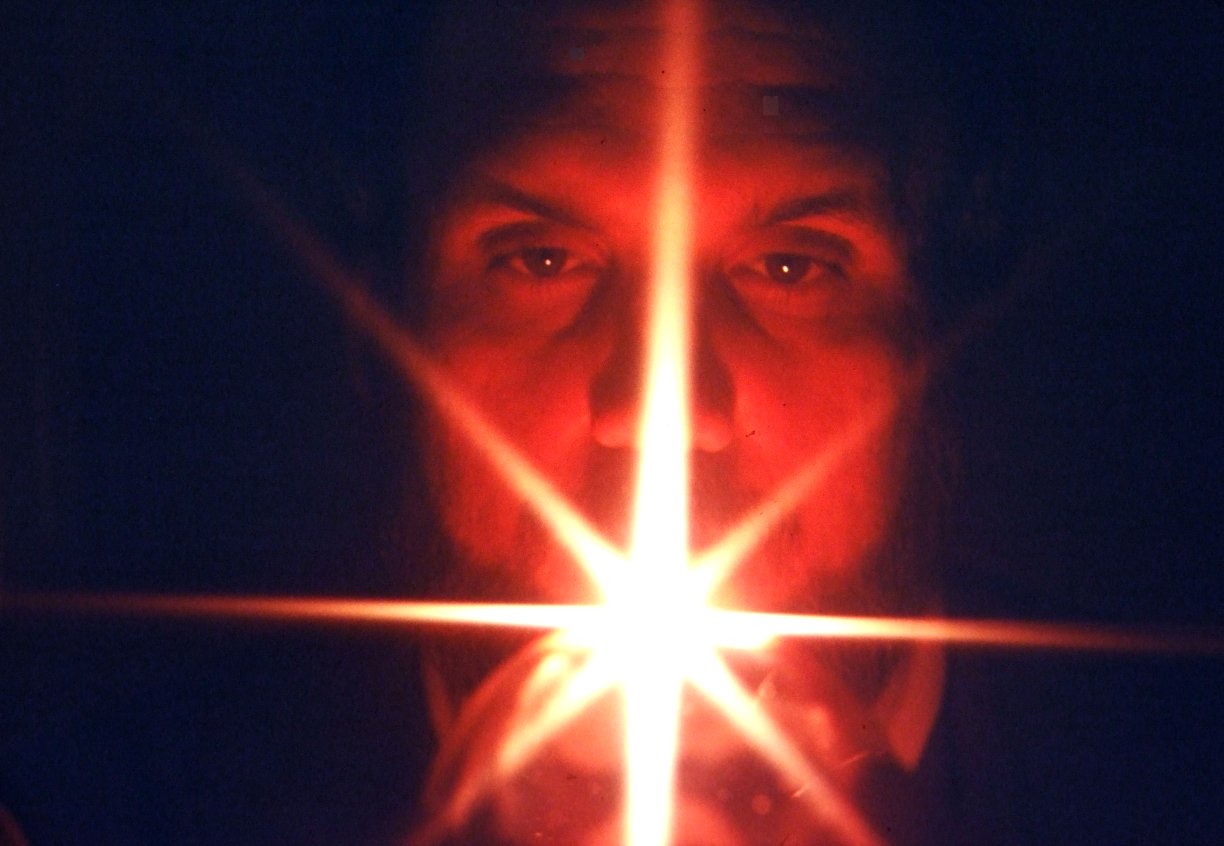J D Emmanuel: The Genesis of My Music
Thursday, September 5th, ISSUE Project Room's 2019 Fall season opens at the First Unitarian Congregational Society in Brooklyn Heights with renowned Texan electronic minimalist composer J D Emmanuel giving what he has referred to as one of his “final live performances.” The evening also features composer and musician James Ferraro presenting selections from his Four Pieces For Mirai, a meditation on technological poiesis and its emergent conditions that spans across four different albums and live concerts. Multi-instrumentalist Eve Essex performs new and unrecorded works that extend the sonic landscape established in her recent debut LP Here Appear.
Magician of an incredible variety of analog keyboards, J D Emmanuel conceives of sound as an organic, expanding flow of energy and dynamic translation of forces. Emmanuel’s cyclicity of patterns and phrases refers to minimalist traditions, but his music has little in common with something purely mathematical. Using an approach to improvisation influenced by his interests in jazz and the temporal expansion of rock jams, he charges harmony with an intimate spontaneity and freedom without boundaries. Minimalism and improvisation, then, became the foundations of his art, and the evocation of trance-like states his goal. Yet, his cyclic, analog synthesizer-based music is different from most of his contemporaries of that era. The "minimalism" in his music lies not in repetitive patterns that barely change -- the extreme end of classical minimalism -- but more in its spare arrangement, open optimism, melodic sensibility, and multi-textured atmospheres punctuated by minimal pulses. At ISSUE, Emmanuel is utilizing three Dave Smith Mono Evolver Keyboards and custom light projections.
J D Emmanuel is a Texas-based electronic minimal pioneer who researches the relationship between music and the mind. He is perhaps best known for his influential album Wizards (1982), one of the most acclaimed private press electronic music albums of all time, reissued on LP by Lieven Martens (2007) and Important Records (2010). Emmanuel’s music is designed for deep meditative, or altered states, to enhance the ability of the mind and the spirit to go beyond what is considered the "normal" boundaries of the five senses into work with creativity, increased spiritual awareness, or mind expansion. He composes and performs electronic synthesizer music, which sometimes includes electronically enhanced acoustic and electric guitar, as well as environmental sounds: rain, wind, birds, oceans, etc. Emmanuel’s style creates a foundation using cyclic, polyrhythmic sounds, as well as drones, that build several layers of improvised leads and rhythms that allow a person to “transcend time and space.” Self-referred to as “Electronic Minimal,” Emmanuel’s approach is based on his deep jazz background influenced by studies in minimal music by such composers as Terry Riley, Philip Glass and Steve Reich, to name a few. He also has an extensive background in spiritual and metaphysical studies, another key influence to how he composes and performs his music. His leads and rhythms are developed as a kind of “Electronic Meditation,” musical contemplations in response to the foundation of a mantra in meditation. Emmanuel's career story is, in a way, a story about a gifted musician whose music may have been lost to the ages if not for the passion of fans. In 2005, record producer Douglas Mcgowan stumbled on several dusty boxes of two J D Emmanuel vinyl albums -- several hundred of them, all still sealed -- at a discount book and record store in North Dallas, Texas. Mcgowan purchased 50 copies and took them back to the west coast. This discovery set in motion a chain of events that led to a series of reissues and Emmanuel's return to recording and performing in 2010. The majority of Emmanuel's studio recordings date from the 1980s, when new age music in America was still a sparse and independent scene. The rediscovery of Emmanuel by critics and audiences in the early 2010s and Emmanuel's comeback to the underground scene were crucial in reweaving the development of electronic music in the early '80s.
Videography by Yiyang Cao. Audio recorded by Bob Bellerue. Edited by James Emrick.

